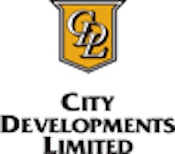Governance can help to actively encourage green behaviour from both consumers and the industry, but good design is also key to enabling green consumerism, said speakers on Thursday at the International Green Building Conference.
Speaking to delegates at the three-day summit held at Marina Bay Sands Convention Centre, Singapore’s Building and Construction Authority (BA) group director Tan Tian Chong noted that the success of green buildings depends on users.
“Ultimately the consumers must drive the green building movement, if it is to be sustainable,” he said. They must be persuaded and educated to make more responsible use of technology.
Efforts to educate users will be the guiding philosophy for BCA’s third green building masterplan, which will focus on developing green behaviour among building users. Green building in Singapore is heavily driven by government efforts, which aim to bring on board the entire construction industry value chain from developers and designers to engineers and building managers.
These efforts have been highly successful to date: since 2005, over 1,700 projects have received the BCA Green Mark certification, representing about 21 percent of the total floor space in Singapore. This puts Singapore well on the way to its target of greening 80 percent of its buildings by 2030.
Currently, the government’s initiatives are taking on a more occupant-centric approach, Mr Tan shared.
The reasons are twofold: on the one hand, BCA’s statistics indicate that tenants account for 50 per cent of a commercial building’s energy consumption, making them a natural target for green education.
“
Ultimately the consumers must drive the green building movement, if it is to be sustainable.
Tan Tian Chong, BCA
On the other hand, Tan added, the health and productivity value of green buildings will be vital for creating asset demand for such buildings. Hence, the Green Mark rating scheme is slowly being adjusted to place greater weightage on occupant well-being.
“And of course, if it facilitates a higher birth rate, we will put that into the Green Mark scheme as well,” Tan quipped in reference to policymakers’ ongoing efforts to boost Singapore’s low birth rates.
To further convince owners of the need for sustainability, data collected over the years of Singapore’s green building efforts shows that there is a strong business case for green buildings.
According to the numbers Tan presented, the green premium for commercial buildings has decreased over the years even as the payback has increased, so that they presently offset each other.
Between the business case and changes in consumer behaviour, Tan observed that sustainability can become a self-perpetuating cycle. “Over the years, various disciplines have strayed,” he said, citing areas such as energy efficiency in engineering and passive design in architecture, both of which are part of the respective professions’ training but which are not being implemented in the market because of commercial and consumer-driven reasons.
A focus on sustainability, however, is helping the professions return to these basics. “I think that systems like the Green Mark have, shall we say, helped them come back to the right path,” Tan said.
Design as an enabler
Keynote speaker Thomas Heatherwick, who also spoke at the plenary discussion, gave delegates an insight into sustainable passive design.
The founder and principal of London-based design studio Heatherwick Studio said that design should begin by taking the user into consideration.
He illustrated this with a number of his recent projects, such as the design he created for the London 2012 Olympic torch: after studying audience reactions to the torches of previous years, he concluded that the construction of the torch had to take into account concerns about material sourcing and waste as, after the event, host cities tended to have problems with the torch’s disposal.
He therefore designed the torch such that its pieces could be separated and gifted to participating countries after the Olympics. “The way we work in the studio in London is to be very much focused on why you do something, what is the objective, think about the user first,” he explained.
Designers, he added, also should not be daunted by a small budget or challenging specifications.
One of his more memorable sustainability-related projects, the UK pavilion at the 2010 World Expo in Shanghai, was carried out on a much smaller budget than its neighbours but still won the event’s gold medal for pavilion design.
Named the “Seed Cathedral” and referencing global seed conservation efforts, it contained 60,000 different species of plant seeds contained in acrylic rods. Heatherwick, who called the pavilion “simultaneously the silliest object and the most serious at the expo”, described design as a means of fulfilling social objectives.
So what is the significance of such a philosophy in the context of green buildings and sustainability? Speaking during the question and answer segment, Heatherwick said that as with design, people need to exercise their judgement about what is really sustainable, and not be carried away by trends.
“We’ve watched society chase solutions and miss the point,” he said. “Sustainability by itself is not sustainable. It’s part of something bigger.”
Eco-Business.com’s special event coverage of the International Green Building Conference 2013 is brought to you by City Developments Limited (CDL).






















